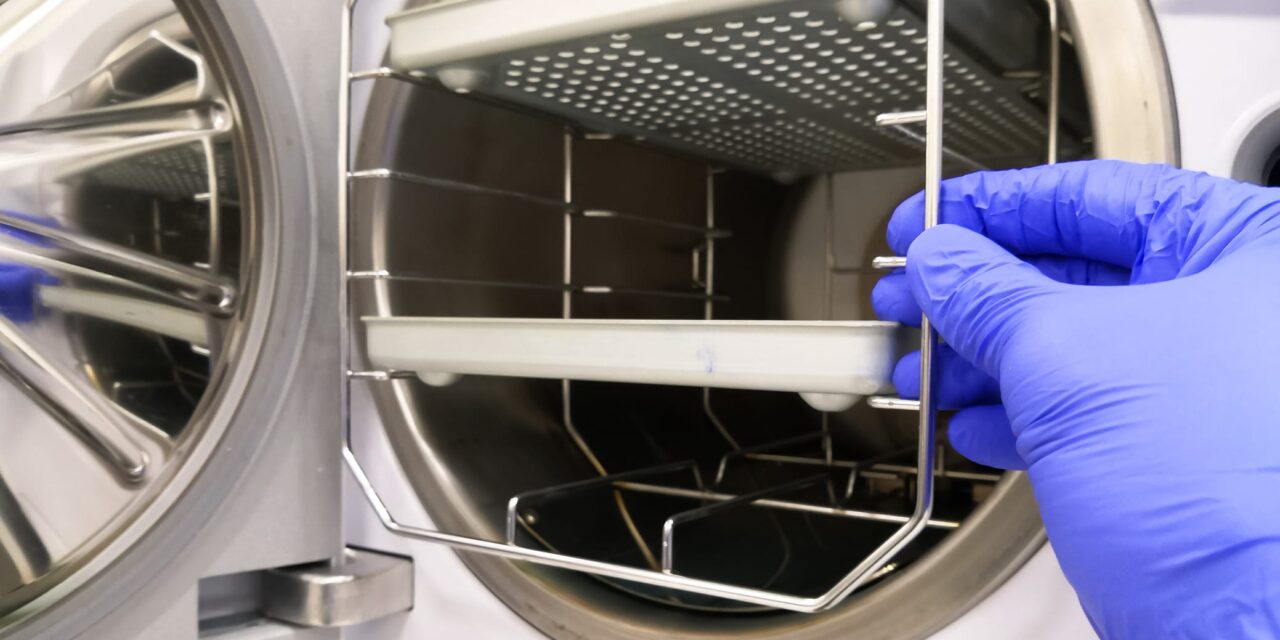Why proper classification, maintenance, and monitoring of tabletop autoclaves matter more than you think.
By Steve C. Keith, CBET, CET
Tabletop autoclaves may look like compact convenience units tucked into corners of outpatient clinics and dental suites, but they carry serious responsibility. As biomedical equipment technicians (BMETs), we’re expected not only to keep these devices running smoothly but also to ensure they’re meeting performance and regulatory standards that rival full-size hospital sterilizers.
That means understanding how they’re classified, what kind of maintenance they need, how to validate sterilization effectiveness, and knowing where things can go wrong—like when a drying cycle gets interrupted or a failed indicator goes unnoticed.
Let’s walk through what every BMET should know to keep these units compliant, effective, and safe.
Understanding the Classes: N, S, and B
Not all tabletop autoclaves are built the same. The EN 13060 classification splits them into three types, and it pays to know which one you’re servicing.
Class N autoclaves are the most basic, using gravity displacement to push steam into the chamber. They’re fine for unwrapped solid instruments but fall short with anything porous or lumened. Class S units vary—some use a bit of vacuum, while others rely on steam bursts—and they’re more flexible but depend heavily on manufacturer specs. Class B autoclaves are the heavy hitters: full fractionated pre-vacuum cycles that can sterilize wrapped, porous, hollow, and lumened instruments. If you’re in an ambulatory surgery center or high-throughput dental clinic, chances are Class B is in play.
Maintenance Isn’t Optional
If autoclaves are running daily, so should your maintenance checklist. Here’s a rhythm that works in most clinical environments:
- Every day, wipe down the chamber with non-abrasive detergent, inspect the door gasket for signs of wear, check that the water reservoir is filled with distilled water, and make sure the drain strainer isn’t clogged.
- Weekly, get a little deeper—descale the tubing, clean filters and trays, and check that the door latch still seals tightly.
- Monthly inspections should include pressure relief valves and terminal blocks. Corrosion loves moisture and will creep in where it’s least convenient.
- Once a year, bring out the calibration tools. Verify sensors, replace HEPA filters, and run a full electrical safety test following IEC 61010-1 and -2-041. Keep those logs pristine—you know the Joint Commission will ask for them.
Indicators Speak Volumes—If You Know How to Listen
You can’t talk sterilization without talking indicators. ISO 11140-1 gives us six chemical indicator classes, but let’s zero in on the ones we actually use.
Every pack gets a Type 1 process indicator, like autoclave tape. It tells us the pack went through a cycle but not whether it got hot or steamy enough inside.
Type 2 is the Bowie-Dick test, and it’s not optional for Class B units. Run it daily—first thing, no shortcuts. It checks that air was properly evacuated, which is crucial for steam penetration.
Type 4 and 6 indicators go inside the packs. Type 4 strips react to multiple conditions like time and temperature, while Type 6 strips are cycle-specific and let you validate everything with more precision. If your autoclave supports them, use them.
Type 5 indicators, the integrators, provide results that mimic biological indicators and are ideal for high-risk instruments. Add them to challenge packs or anywhere sterility assurance needs to be bulletproof.
And don’t forget the weekly biological indicator test. Those little vials with Geobacillus stearothermophilus spores are your gold standard. Incubate and log every time. Missing one can mean missing an entire sterilization breach.
Closed-Door Drying: Why It’s Non-Negotiable
One feature that’s more than just modern convenience is electronically latched doors. In Class B autoclaves, these doors don’t unlock until drying is fully complete, and for good reason.
Opening the chamber too early—even by accident—introduces ambient air before packs are dry. Moisture + air = microbial wicking. That’s contamination waiting to happen.
According to AAMI ST79, Section 10.5.1, closed-door drying is a must. Not “recommended,” not “best practice”—required. HEPA-filtered air during the drying cycle, sealed chamber until temperature and pressure normalize, and complete cycle printouts or logs that show drying wasn’t skipped. If the drying fails or is aborted? Reprocess the entire load. No exceptions.
When Things Go Wrong: A TASS Warning
Improper sterilization doesn’t just cause regulatory headaches—it can harm patients. One adverse event worth calling out is toxic anterior segment syndrome (TASS). It’s a severe, sterile inflammatory reaction that can occur after ophthalmic surgery.
Cases have been traced to leftover detergent on instruments, biofilm inside reservoirs, and contaminated ultrasonic baths. The culprit is often equipment that wasn’t properly cleaned, rinsed, or validated. Even short-cycle autoclaves with compromised drying have played a role.
According to the American Society of Cataract and Refractive Surgery TASS Task Force, prevention hinges on eliminating residue, using distilled water, and segmenting cleaning equipment (especially ultrasonic cleaners) for ophthalmic use only. If you’re maintaining autoclaves in eye clinics, this isn’t a sidebar—it’s a frontline responsibility.
Regulatory Alignment: Where It All Comes Together
You’ll need to juggle several standards to stay compliant:
- ANSI/AAMI ST55 covers general tabletop sterilizer operation and servicing.
- ISO 11140-1 defines your chemical indicator types.
- EN 13060 explains the performance classifications.
- IEC 61010 governs electrical safety testing.
- The Centers for Disease Control and Prevention sets guidelines for sterilization validation and staff competency.
- And, of course, the Joint Commission wants spotless logs and traceability for every sterilization event.
Each facility may tack on its own standard operating procedures—daily sign-offs, cycle audits, quarterly competency reviews. It’s a lot, but good documentation and proactive servicing make audits a formality rather than a scramble.
Final Word: From One Tech to Another
Sterilization isn’t just about heating things up—it’s about eliminating doubt. Tabletop autoclaves may be small, but they carry huge responsibility. As BMETs, we’re the first line of defense against infection risks, compliance failures, and equipment breakdowns.
By understanding the classification system, keeping up with maintenance, leveraging closed-door drying, and interpreting indicators correctly, we protect more than devices—we protect patients.
Every cycle validated. Every log complete. Every pack sterile. That’s the mark of a tech who knows the heat isn’t just in the chamber—it’s on us.
About the Author: Steve Keith, CBET, CET, has worked in the biomedical equipment field since the early 1980s, with experience spanning hospitals, manufacturers, distributors, and consulting. He has served as a technical trainer, field support specialist, and engineering consultant across a range of medical technologies. He holds certifications as a certified biomedical equipment technician and as an ISCET Certified Electronics Technician with a biomedical journeyman specialization. He is currently the director of technical support at Medical Maintenance.
ID 248146840 © Senkumar Alfred | Dreamstime.com
References
- American National Standards Institute & Association for the Advancement of Medical Instrumentation. (2014). ANSI/AAMI ST55: Tabletop steam sterilizers. AAMI.
- Association for the Advancement of Medical Instrumentation. (2020). ANSI/AAMI ST79: Comprehensive guide to steam sterilization and sterility assurance in health care facilities. AAMI.
- Centers for Disease Control and Prevention. (2016). Guideline for disinfection and sterilization in healthcare facilities. Available at https://www.cdc.gov/infectioncontrol/guidelines/disinfection/
- International Organization for Standardization. (2014). ISO 11140-1: Sterilization of health care products—Chemical indicators—Part 1: General requirements. ISO.
- Joint Commission. (2023). Comprehensive Accreditation Manual for Ambulatory Care. https://www.jointcommission.org/





